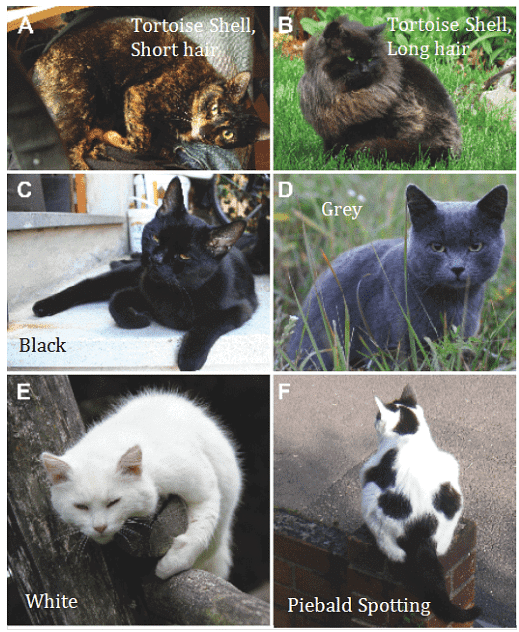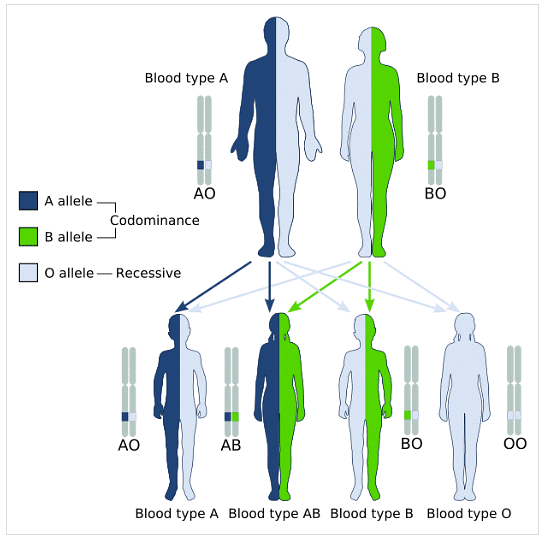Multiple Alleles | Botany Optional for UPSC PDF Download
Introduction
In the world of genetics, the concept of multiple alleles is a fascinating and essential one. This article delves into the definition of multiple alleles, explores various examples from the animal and plant kingdoms, and clarifies the distinction between multiple alleles, pleiotropy, and epistasis.
Definition of Multiple Alleles
- Gregor Mendel's initial work in genetics suggested that each gene could have only two alleles, which are different forms or variants of a gene. These alleles are inherited as one from each parent, meaning that an individual typically has two different alleles for a specific trait.
- Offspring with two different alleles for a gene are termed heterozygous, while those with the same alleles (i.e., two identical copies of a gene for a particular trait) are called homozygous.
- Although diploid organisms like humans can have only two alleles for any given gene, the concept of multiple alleles is crucial in promoting genetic variation within a species.
- In Mendelian inheritance, a chromosomal locus was thought to contain two distinct gene alternatives—one dominant and one recessive, representing two alleles of the same gene. However, in certain populations, there can be more than two alternatives (alleles) for a particular gene. This situation is referred to as "multiple allelism," where different forms of the same gene coexist within the population. These three or more variants of the same gene are referred to as multiple alleles.
Examples of Multiple Alleles
To understand multiple alleles better, let's explore some compelling examples from the biological world:
1. Coat Color of Cats
- Domestic cats have been selectively bred for thousands of years to exhibit various coat colors, ranging from black and orange to brown and white. The gene responsible for a cat's coat color possesses multiple alleles, leading to this stunning diversity. The interactions between these alleles determine the coloration and pattern of a cat's fur.
- For instance, in some cats, patches of black and orange (tortoiseshell pattern) or black, grey, white, and patches of white fur (piebald spotting) result from the presence of more than two alleles for the coat color phenotype. Predicting the coat color of kittens based on parental phenotypes can be quite complex due to the multitude of possible allele combinations.
 Showing different coat colors among cats.
Showing different coat colors among cats.
2. Multiple Alleles in Fruit Flies
- The common fruit fly, Drosophila melanogaster, is a favorite laboratory model due to its high reproduction rate and ease of analysis. Despite having only four chromosomes, fruit flies possess approximately 17,000 genes, each subject to mutation and the emergence of new alleles.
- One striking example of multiple alleles in fruit flies involves variations in wing length. Mutations at a specific locus can result in vestigial (reduced) wings or antlered (less developed) wings. When flies with different wing mutations are crossed, the F1 hybrids exhibit intermediate wing lengths, showcasing the presence of multiple alleles at this locus. Additional wing phenotypes, such as nicked wings, strap wings, or even the absence of wings, are attributed to different alleles in this population.
3. Multiple Alleles Among Humans: ABO Blood Group System
- In humans, the ABO blood group system is a classic example of multiple alleles. The gene responsible for this trait, gene I (I for 'isohaemagglutinin'), exists in three allelic forms: IA, IB, and IO. Each of these alleles governs the production of specific antigens on the surface of red blood cells (RBCs).
- IA produces type A antigens.
- IB produces type B antigens.
- IO (or i) is a recessive allele and does not produce any antigen.
- The combination of alleles inherited from both parents determines an individual's blood type. For example, someone inheriting IA from one parent and IB from the other will have blood type AB, while an individual receiving two IO alleles (or ii) will have blood type O.
 Possible blood types of offspring from a cross between male and female parent with blood type A and Blood type B, respectively.
Possible blood types of offspring from a cross between male and female parent with blood type A and Blood type B, respectively.
- It's important to note that although the population contains three alleles, each individual inherits only two of them from their parents, leading to various genotypes and phenotypes.
Multiple Alleles in Plants: Tuber Shape in Potatoes
- Potato tuber shape may seem continuous, with visual phenotypes like round or long tubers. Recent research has indicated the presence of multiple allele systems governing potato tuber shape. In this context, the recessive allele for tuber shape is considered a null or near-null allele, while variation between dominant alleles is quantitative.
- The existence of multiple alleles for this trait is reminiscent of similar findings in maize. Understanding these multiple alleles helps explain quantitative genetic variation in traits like tuber shape, shedding light on the complexities of inheritance.
Multiple Alleles in Bacteria
- Bacteria possess a wide array of genes, many of which have multiple alleles. These diverse wild-type alleles are often linked to different types of virulence and can be utilized for subspecies classification, such as through housekeeping genes for Multi Locus Sequence Typing (MLST). Therefore, it is crucial to rapidly identify not just the target gene but also the relevant allele.
- Currently available sequencing-based methods rely on aligning reads to known allele references, which is a time-consuming process. To comprehend and predict the pathogenic impact and outbreak potential of a bacterial infection, it's essential to go beyond identifying the responsible species.
- Bacterial virulence is often controlled at a subspecies level by specific genes or alleles, requiring distinct treatment strategies for infections caused by the same bacterial species.
- Antibiotic resistance is a notable example where minor variations in a gene can lead to a wide range of antibiotic resistance profiles within a single taxonomic group.
- Furthermore, different alleles of the same gene may be responsible for different adhesion and invasion strategies, responses to the host organism's immune system, and toxin production.
- In addition to its significance in understanding virulence, identifying alleles of specific genes enhances the precise classification of bacteria.
Distinguishing Multiple Alleles from Pleiotropy and Epistasis
It's important to distinguish multiple alleles from two other common genetic phenomena:
- Pleiotropy: Pleiotropy involves one gene with multiple effects on an organism's phenotype. For example, in some cases, individuals with albinism not only lack pigment but may also exhibit traits like crossed eyes. However, not all individuals with albinism display these traits, indicating a lack of linkage between the two.
- Epistasis: Epistasis occurs when one gene's expression depends on the presence or action of another gene. For instance, in certain animals like horses, one gene influences coat color by affecting the deposition of hair pigment.
Conclusion
Multiple alleles play a pivotal role in shaping the diversity of traits within populations. From the coat colors of cats to the ABO blood group system in humans, the presence of multiple alleles creates a rich tapestry of genetic variations. Understanding these alleles not only aids in unraveling the complexities of inheritance but also has implications for fields like medicine, agriculture, and microbiology.
|
179 videos|143 docs
|




















